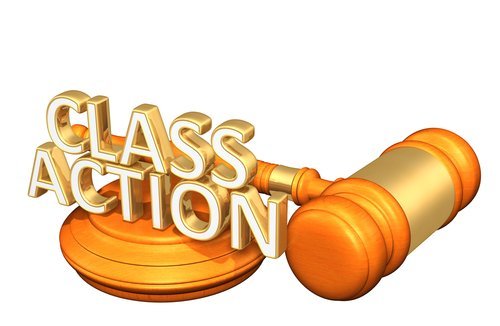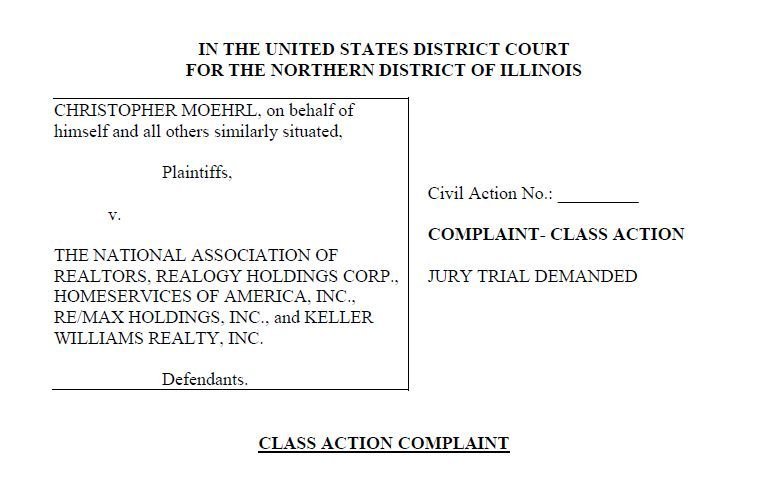Navigating the BioVie Class Action Lawsuit: What You Need to Know
Wiki Article
Exploring Class Activity Claims: What You Required to Know
Class action lawsuits have become significantly widespread in today's lawful landscape, with people signing up with forces to seek redress against firms and companies. In this discussion, we will check out the ins and outs of course activity lawsuits, clarifying their meaning, the requirements for declaring, and the possible advantages and disadvantages included. We will certainly delve right into the steps entailed in a course action lawsuit and examine some current site situations that have formed this area of regulation. Comprehending the complexities and subtleties of class activity claims is important for anybody looking for justice in a collective way, so let's start our exploration with each other.The Interpretation of Class Activity Lawsuits
A course action legal action is a lawful action filed by a team of individuals who have comparable insurance claims versus an offender. Course activity legal actions are commonly brought when the number of prospective plaintiffs is as well big for specific lawsuits to be useful.Among the key components of a course activity legal action is that the lead complainant, likewise understood as the class rep, stands for the passions of all the course members. The court appoints the lead complainant based upon their ability to fairly and appropriately stand for the class. The lead complainant functions closely with the course activity attorney to construct a solid situation and look for settlement or other remedies on part of the whole class.
In order for a course action lawsuit to continue, the court should license the course. This implies that the court determines that the legal action satisfies certain demands, such as numerosity (a large enough number of class members), commonness (usual questions of regulation or truth), typicality (the claims of the lead plaintiff are typical of the class), and adequacy of representation (the lead complainant and class advise can standing for the class's passions) Once the course is certified, the claim can move on, and any kind of judgment or settlement reached will relate to all class participants unless they pick to opt-out.
Course action legal actions serve a crucial objective in offering access to justice for people that may not have the sources to pursue their cases individually. They likewise promote effectiveness in the legal system by combining similar claims right into a solitary action, minimizing the burden on both the court and the parties entailed.
Demands for Submitting a Course Activity Lawsuit

One more need is that the course should be sufficiently countless. The specific variety of course participants called for might differ relying on the territory and the nature of the situation. It is typically expected that the course needs to be big enough that joining all the individual complainants right into a single lawsuit is more reliable than having numerous different claims.
Additionally, it is vital that the class representative, that is the specific or entity bringing the suit on part of the class, has typical cases and defenses to those of the class participants. The rep has to additionally have the ability to appropriately and rather represent the passions of the entire course.

Benefits and Disadvantages of Course Action Lawsuits
Course activity suits offer both benefits and downsides for complainants and accuseds involved in the lawful procedure. On the one hand, one of the substantial benefits of class action legal actions is that they supply a cost-efficient and efficient way for people with similar cases to go after justice collectively. By consolidating countless comparable cases right into one suit, course actions improve the legal procedure and save time and sources for both plaintiffs and offenders.An additional benefit of class activity lawsuits is that they enable people with limited resources to look for settlement for their damages. In situations where the possible recovery is little, specific lawsuits may not be financially sensible. However, by joining pressures in a class action, plaintiffs can merge their sources and increase their possibilities of getting a fair resolution.
Additionally, class activities can advertise social adjustment by holding firms accountable for their actions. By accentuating widespread misconduct or faulty products, class actions can press business to alter their methods, boost item safety and security, or apply reforms.
However, class actions likewise have downsides. One prospective downside is that private plaintiffs may have limited control over the lawsuits procedure and the best end result of the instance. The lead complainants and their attorneys normally make essential choices on behalf of the entire class, which might not constantly line up with the private rate of interests of each course member.
Furthermore, class actions can be prolonged and time-consuming, typically taking years to reach a resolution. The complexity and dimension of these claims can cause delays and prolonged lawsuits, which can be discouraging for both complainants and accuseds seeking a timely resolution.
Steps Involved in a Course Action Legal Action
The process of a class activity claim generally starts with the identification of a possible class and the filing of an issue. When a team of individuals who share comparable claims versus an accused is determined, the lead complainant, or class rep, files a complaint in behalf of the entire course. This complaint lays out the alleged misbehavior and seeks damages or various other relief for all participants of the class.After the problem is submitted, the court will establish whether the case satisfies the requirements for class qualification. These requirements commonly include numerosity (a big adequate class), commonness (comparable legal insurance claims), typicality (the lead complainant's cases are representative of the course), and adequacy of representation (the lead complainant and their lawyer can sufficiently stand for the course's interests)
If the court accredits the course, notice is offered to all prospective course participants, giving them the chance to opt-out if they desire to seek their very own specific claims - BioVie class action lawsuit. If an adequate variety of class members stay, the situation will certainly continue to the exploration phase, where both sides gather evidence and info appropriate to the insurance claims
Adhering to exploration, the events might participate in settlement negotiations or proceed to trial. If the case goes to test and the course prevails, the court will determine the proper problems or alleviation to be awarded to the course participants.
Current Site Class Action Lawsuits
With a strong understanding of the actions involved in a course activity claim, it is currently crucial to take a look at some recent site situations that have made a significant impact in the lawful landscape. Future FinTech class action lawsuit. These situations have not only formed the means course action suits are conducted but have likewise caused changes in numerous marketsOne such site case is the Volkswagen exhausts rumor, which caused the largest course activity settlement in auto background. In 2015, it was revealed that Volkswagen had installed software program in their automobiles to cheat exhausts tests. This deceptiveness influenced countless consumers worldwide, bring about a class activity suit. The settlement gotten to in 2016 amounted to about $15 billion, making up affected auto owners and enforcing charges on Volkswagen.
An additional remarkable situation is the Johnson & Johnson talc claim. Thousands of ladies submitted suits versus the firm, asserting that their baby powder items created ovarian cancer cells. In 2018, my explanation a jury awarded $4.7 billion in problems to 22 plaintiffs. This instance raised issues concerning the safety of baby powder and motivated Johnson & Johnson to customize their item labeling.
These recent site instances demonstrate the power of class action claims in holding firms accountable for their actions and seeking justice for affected individuals. They act as examples of just how class action claims can cause significant changes and safeguard the legal rights of customers.
Verdict
In conclusion, class activity claims are a legal device that permits a group of individuals to collectively look for justice for a typical grievance. Comprehending the requirements and actions entailed in filing a class activity suit is essential for people seeking to seek this legal avenue.One of the vital aspects of a course action lawsuit is that the lead complainant, additionally recognized as the class representative, stands for the rate of interests of all the class participants.In order for a class activity claim to proceed, the court needs to certify the course. This means that the court establishes that the claim browse around this site satisfies particular requirements, such as numerosity (a huge enough number of course members), commonality (common concerns of law or truth), typicality (the cases of the lead plaintiff are regular of the class), and adequacy of representation (the lead complainant and course guidance are qualified of standing for the class's rate of interests) As soon as the class is licensed, the suit can relocate onward, and any judgment or negotiation got to will apply to all class participants unless they choose to opt-out.
The process of a course activity lawsuit usually starts with the identification of a possible course and the filing of a grievance.
Report this wiki page